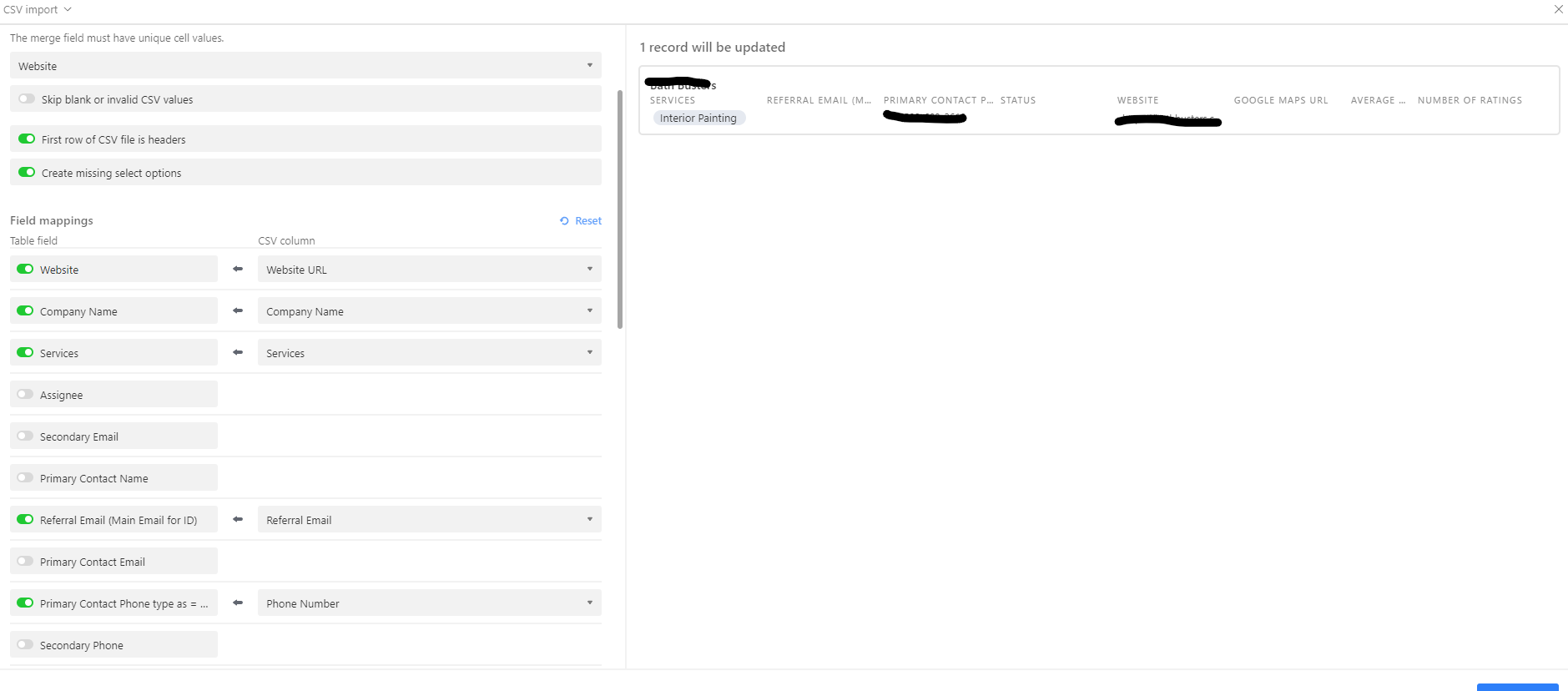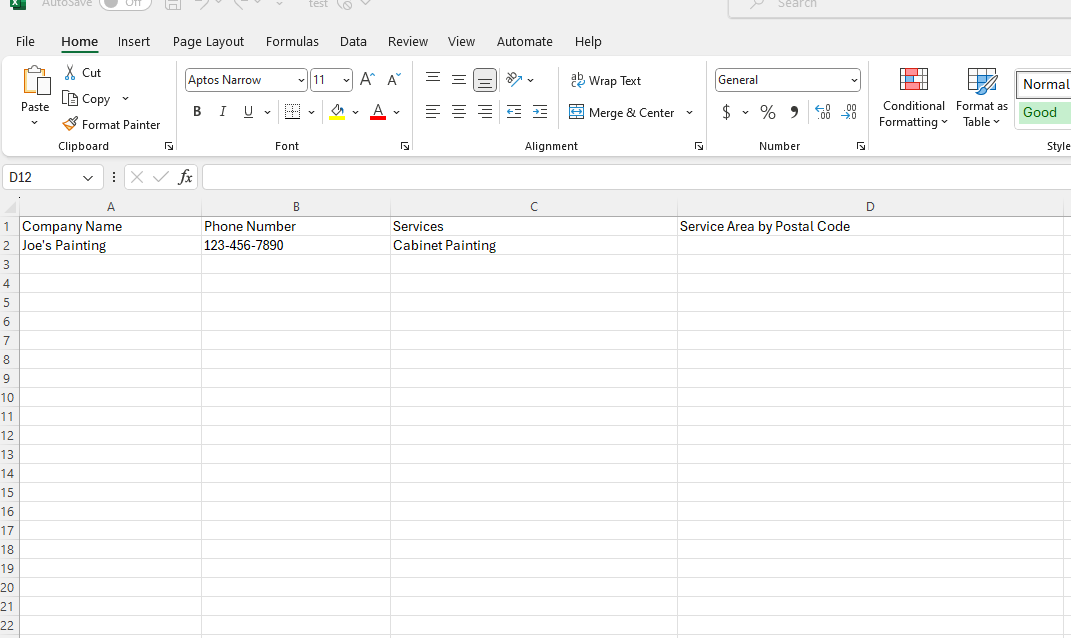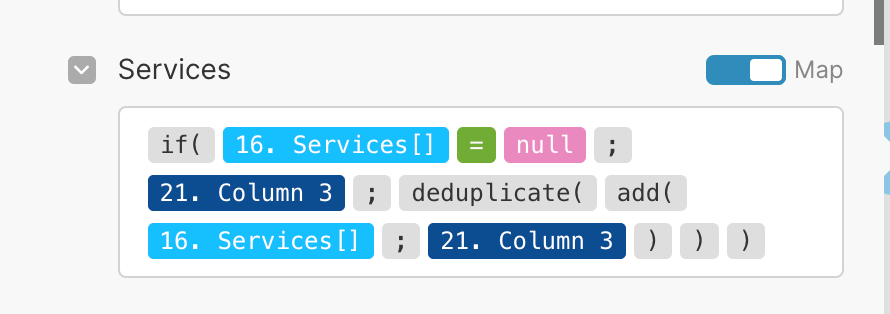Hello -
We have a table of home improvement companies and we use the multiple select feature to indicate what services they offer. There are 82 services under the select feature and we add as many as the company does.
For example, Best Painting is tagged for "Interior Painting" "Exterior Painting" etc.
During a bulk upload, we use the website as a unique ID, and we want to add services to existing companies without replacing their old ones.
Best Painting is on our bulk upload list, and we want to add "Cabinet Painting" to their services. When we do this using the CSV extension, it always clears and replaces the existing services. We have merge records toggled on and it will say "1 record will be updated" - but it always replaces instead of adds.
Any tips?







